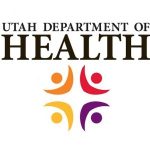Pediatric Integrated Post-Trauma Services
Pediatric Integrated Post-Trauma Services (PIPS) is a Category ll Center of the National Child Traumatic Stress Network (NCTSN) housed at the University of Utah. Funded by SAMHSA in 2016, the goal of PIPS is to improve the identification, health care system response, and access to treatment for children at risk for traumatic stress. The PIPS team focuses its work in children’s advocacy centers, pediatric primary care, and foster care settings.
Eighty percent of all youth experience at least one potentially traumatic event by 18 years old. In any given year, 5-10% of children have significant and persistent symptoms of traumatic stress. Particularly, children served by children’s advocacy centers and foster care are likely to experience chronic trauma exposure, traumatic stress, and mental health misdiagnosis. Yet, the appropriate identification of child traumatic stress could result in improved utilization of trauma-specific evidence-based mental health resources and mitigate over prescribing of medications. Having a way to identify, engage and connect children who struggle after trauma means more children getting the right type of help at the right time!
The Child Traumatic Stress Care Process Model (CPM) offers an approach to be used in children’s advocacy centers and pediatric primary care to identify children and families at risk of traumatic stress. The CPM also guides family decision making, links at-risk children to evidence-based trauma therapy, and encourages providers’ use of in-office interventions to help families cope with stress associated with exposure to a traumatic event.
Additionally, children placed into foster care commonly have several traumatic experiences that can result in misuse or overuse of psychotropic medications. Utah Psychotropic Oversight Program (UPOP) offers oversight and consultation to community professionals regarding children and adolescents in foster care in order to provide safe, evidence based, and trauma informed medication treatment for mental and behavioral health issues.
Why Focus on Trauma in Children
Traumatic stress needs addressing for the following reasons:
- High prevalence. Up to 80% of children experience at least one significant traumatic experience in childhood (TUR). Minority children, including those who are members of federally recognized tribes, are disproportionately impacted by trauma, and continue to have high rates of contact with the healthcare system (HUS, CRO).
- Poor mental health outcomes. After exposure to traumatic experiences, some children and adolescents develop adverse traumatic stress responses, including Acute Stress Disorder (ASD) or Posttraumatic Stress Disorder (PTSD). They are also at risk for suicidal and homicidal intent, mental health comorbidities (e.g., depression, anxiety, ADHD), substance use (including opioid dependency), and other risky behaviors that affect their ability to function and put them at risk for long-term problems.
- Poor health outcomes and lower life expectancy. The Adverse Childhood Experience (ACE) studies link child maltreatment to early death and other poor health outcomes in childhood and adulthood including obesity, cardiovascular disease, and diabetes (FEL).
- High cost. When children with traumatic stress are not identified or appropriately referred to evidence-based treatment, they can experience exacerbated symptoms and poorer outcomes retulting in elevated costs (BRA, COH1, ROB). The Centers for Disease Control and Prevention (CDC) reported in 2008 that the lifetime economic burden of cases of child maltreatment in one year in the US is $124 billion (FAN, NOR).
- Often under-diagnosed and misdiagnosed. Lack of awareness or screening, symptom similarity to other mental health conditions, and / or the difficulty providers face with discussing and intervening in trauma situations contribute to the underdiagnosis or misdiagnosis of traumatic stress. Misdiagnosis can also lead to inappropriate psychotropic treatment. There are currently no medications approved by the FDA for trauma-specific symptoms in children (KEE).
- Early identification and integrated care using evidence-based treatments can increase positive outcomes. A number of trauma-specifictherapy models have demonstrated effectiveness in remediation of traumatic stress symptoms in children and adolescents (GHO, GRE, DOR, COH1). Resiliency studies indicate that children with parental support and access to services can recover from traumatic experiences (DUB, LAY, FLO). Several treatment studies have shown significant symptom remediation (GHO, GRE, DOR, COH2).
- Excerpt taken from the Intermountain Child Traumatic Stress Care Process Model, found here.
Key Points
Using the three step process
For children 6 – 18 years who report a potentially traumatic experience on the UCLA Brief Screen for Trauma and PTSD (see page #), the process of responding effectively to child traumatic stress involves three steps:
1. Report if required. In Utah, reports can be made to either local law enforcement or to the Child Protective Services office of DCFS (1-855-323-3237).
2. Respond to suicide risk. If the parent or youth endorses any number of days of suicidal thinking, primary care providers are directed to the Suicide Prevention CPM to determine severity of risk and appropriate response.
3. Stratify treatment approach. Results and responses from the pediatric traumatic stress CPM screening tool are stratified into 3 levels. The mild range scores (0 – 10) (a “protective approach”); the moderate range (11 – 20) (a “resilient approach”); and severe range (21 or higher) (a “restorative approach”).
Brief in-office intervention
Based on screening tool results, a brief in-office intervention targeting their most prominent symptom(s) has been shown to make a big difference for many children.
Follow up at regular intervals
In primary care settings, you can evaluate the response to services using the UCLA Brief Screen for Trauma and PTSD at follow up visits.
- Excerpt taken from the Intermountain Child Traumatic Stress Care Process Model, found here.
Resources
Check out the Resource tab for a full list of resources.
CPM Team
The CPM Team is a multi-disciplinary team including faculty and providers from the University of Utah and Intermountain Healthcare. We also collaborate with providers and faculty from other institutions and settings.









